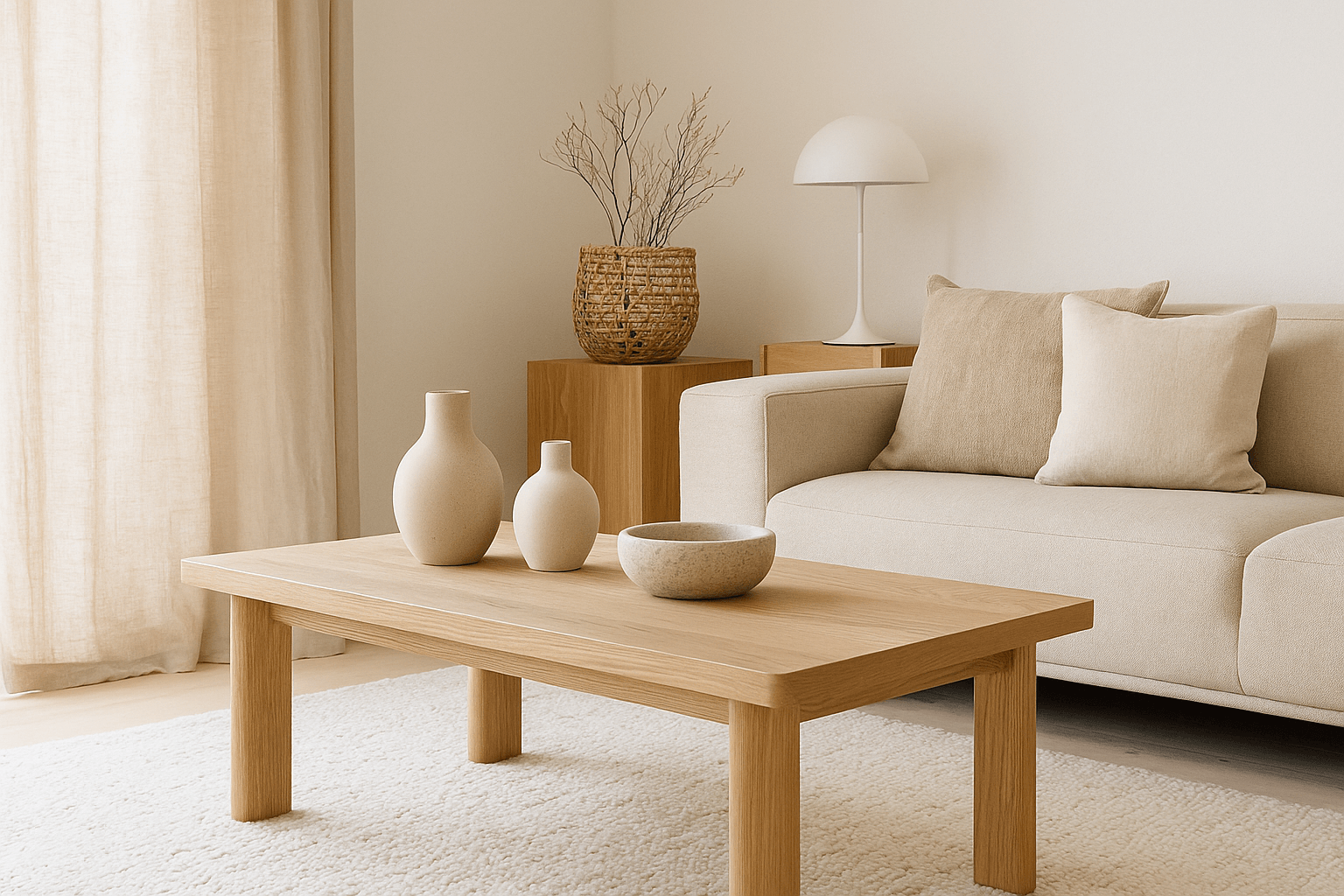Why a Minimalist Living Room?
A minimalist living room offers a peaceful retreat from the noise of everyday life. But minimal doesn’t mean stark or sterile—it means intentional, balanced, and inviting. The goal is to simplify your space without sacrificing warmth or personality.
Whether you live in a studio apartment or a spacious home, the living room is where we gather, unwind, and connect. That’s why designing it with care can have such a positive impact on your well-being.
The Balance: Minimalism vs. Emptiness
Minimalism is often misinterpreted as removing everything. In truth, it’s about editing thoughtfully, not eliminating completely.
A warm minimalist living room uses:
-
Natural textures like wood, linen, and wool
-
Soft lighting to create ambience
-
Fewer, but meaningful decor items
-
Neutral tones with occasional contrast
This approach allows your home to feel airy and calm, but still lived-in and welcoming.
Key Elements of a Warm Minimalist Living Room
1. Start with a Neutral Base
Choose a palette of whites, beiges, soft greys, or taupes. This foundation creates visual calm and makes layering textures easier.
2. Use Texture to Add Depth
When color is minimal, texture becomes essential. Add wool rugs, linen cushions, wood grain finishes, and ceramic accents. These tactile elements keep the room from feeling flat.
3. Invest in Quality, Not Quantity
One beautiful coffee table or a perfectly crafted armchair makes a stronger visual statement than several mismatched pieces.
4. Let Furniture Breathe
Give each item room to stand out. Leave space between the furniture and the walls. Avoid crowding tables or shelves with decor.
5. Choose Functional Decor
Look for items that combine form and function—like a sculptural lamp, a handmade bowl, or a woven basket used for storage.
6. Soften with Lighting
Warm-toned bulbs, floor lamps with fabric shades, or low pendant lights help create a cozy atmosphere that offsets minimalism’s clean lines.
Layout Tips: Flow, Comfort & Function
-
Leave clear pathways for movement—this promotes spaciousness and reduces visual chaos.
-
Use area rugs to anchor furniture groupings and add softness underfoot.
-
Keep surfaces mostly clear, but allow space for daily living—like a cup of tea, a book, or a candle.
Common Mistakes to Avoid
-
Over-minimizing to the point of sterility
-
Using only cool tones, which can make the space feel cold
-
Filling space for the sake of it—embrace negative space instead
-
Choosing quantity over harmony—cohesion matters more than filling every wall
Personalizing Without Clutter
Yes, you can make a minimalist space feel like you. Here's how:
-
Add a single meaningful artwork or print
-
Display one or two favorite objects (handmade ceramics, a vintage vase)
-
Use a few books or natural objects like driftwood or stone
Personal doesn’t have to mean busy. It just has to be intentional.
Final Thoughts
A warm minimalist living room is the perfect balance of simplicity and comfort. It’s uncluttered, yet cozy. Functional, yet beautiful. When you strip away the non-essential and design with care, you create a space that allows you to breathe, relax, and be fully present.
Minimalism isn’t about doing without—it’s about living with clarity.
















